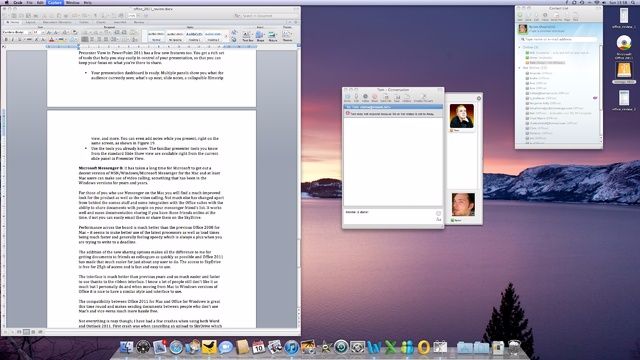

OFFICE 2011 FOR MAC AND CSV WINDOWS 7
PPS My original csv file was created on a Windows 7 computer, in UTF-8 format (with the BOM bytes EF BB BF in the beginning) and used CRLF line breaks. PS The UTF-16LE created by iconv has BOM bytes FF FE in the beginning.

Step 2: select proper values for Delimiters and Text qualifier.Step 1: File origin: ignore it, it doesn't matter what you choose.Open the file in Excel and in the Text Import Wizard choose: Iconv -f UTF-8 -t UTF-16LE filename.csv >filename_ txt extension forces Excel to run the Text Import Wizard): Using iconv on Mac, convert the file to UTF-16 Little-Endian + name it *.txt (the. The following worked for me on Excel for Mac 2011 and Windows Excel 2002: Convert it to WINDOWS-1252 using iconv: iconv -f UTF-8 -t WINDOWS-1252 query_result.csv > query_result-win.csv However, suppose you have a file query_result.csv which you know is UTF-8 encoded. ConversionĬonversion is done differently in every tool and language. | Ÿ | 159 | 376 | 0x9F | U+0178 | Ÿ | Latin capital letter Y with diaeresis | Latin Extended-A | | ž | 158 | 382 | 0x9E | U+017E | | Latin small letter z with caron | Latin Extended-A | | œ | 156 | 339 | 0x9C | U+0153 | œ | Latin small ligature oe | Latin Extended-A | | › | 155 | 8250 | 0x9B | U+203A | › | single right-pointing angle quotation mark | General Punctuation |

| š | 154 | 353 | 0x9A | U+0161 | š | Latin small letter s with caron | Latin Extended-A | | ˜ | 152 | 732 | 0x98 | U+02DC | ~ | small tilde | Spacing Modifier Letters | | ” | 148 | 8221 | 0x94 | U+201D | ” | right double quotation mark | General Punctuation | | “ | 147 | 8220 | 0x93 | U+201C | “ | left double quotation mark | General Punctuation | | ’ | 146 | 8217 | 0x92 | U+2019 | ’ | right single quotation mark | General Punctuation | | ‘ | 145 | 8216 | 0x91 | U+2018 | ‘ | left single quotation mark | General Punctuation | | Ž | 142 | 381 | 0x8E | U+017D | | Latin capital letter Z with caron | Latin Extended-A | | Œ | 140 | 338 | 0x8C | U+0152 | Œ | Latin capital ligature OE | Latin Extended-A | | ‹ | 139 | 8249 | 0x8B | U+2039 | ‹ | single left-pointing angle quotation mark | General Punctuation | | Š | 138 | 352 | 0x8A | U+0160 | Š | Latin capital letter S with caron | Latin Extended-A |

| ˆ | 136 | 710 | 0x88 | U+02C6 | &circ | modifier letter circumflex accent | Spacing Modifier Letters | | „ | 132 | 8222 | 0x84 | U+201E | „ | double low-9 quotation mark | General Punctuation | | ƒ | 131 | 402 | 0x83 | U+0192 | ƒ | Latin small letter f with hook | Latin Extended-B | | ‚ | 130 | 8218 | 0x82 | U+201A | ‚ | single low-9 quotation mark | General Punctuation | Be advised that ISO-8859-1 is missing some characters from WINDOWS-1252 as shown here: | Char | ANSI | Unicode | ANSI Hex | Unicode Hex | HTML entity | Unicode Name | Unicode Range | This encoding is a superset of ISO-8859-1 (aka LATIN1 and others), so you can fallback to ISO-8859-1 if you cannot use WINDOWS-1252 for some reason. Both versions at least include a corresponding "File origin" or "File encoding" selector which correctly reads the data.ĭepending on your system and the tools you use, this encoding could also be named CP1252, ANSI, Windows (ANSI), MS-ANSI or just Windows, among other variations. Since its basically Microsofts own proprietary character set, one can assume it will work on both the Mac and the Windows version of MS-Excel. I found the WINDOWS-1252 encoding to be the least frustrating when dealing with Excel.


 0 kommentar(er)
0 kommentar(er)
